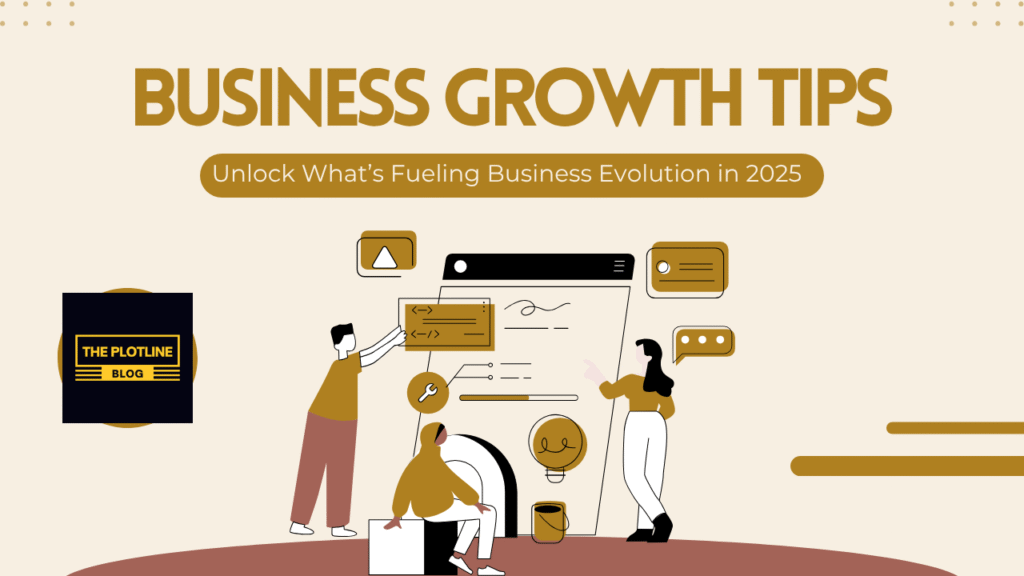
Business transformation isn’t just a temporary trend in the corporate world—it’s a key part of growing in 2025. Companies today can’t afford to stay the same. To stay relevant and keep an edge over competitors, no matter the challenges like digital changes, shifting markets, or customer needs, transformation is essential.
This blog talks about three key things that make transformation work: having a clear plan, getting people involved, and using the right technology.
When these three work together, they help ordinary businesses become truly successful ones.
Strategy Driven by Long-Term Vision
Business transformation doesn’t happen by chance. It begins with a bold idea.
In 2025, companies that have a clear direction — knowing exactly where they’re going and why — are actually moving forward.
Strategy isn’t just a document. It’s the story you tell your team, the numbers you check every quarter, and the steps you take with confidence. A good plan is your starting point, whether you’re rebuilding your business or entering new markets.
Take Microsoft, for instance.
They’re shifting to a cloud-first approach. That’s not just a change in products — it’s a full transformation of the company, including technology, thinking, leadership, and how people act.
Think about this: Where do you want to be in the next few years?
What’s stopping you? What’s keeping you from moving forward?
Workplace Roles, Values, and Leadership Dynamics
Mission, vision, strategy, and plans can’t succeed without your team’s commitment. That’s why change is so personal. People like Transformation Leads, Change Coaches, and agile team champions are important not just for the company, but for building trust. When people understand their part in the change, they become active drivers of change.
By 2025, most companies will face “transformation fatigue”—that feeling of being worn out from too much change without proper support.
The solution is transparency, involvement, learning, and a mindset of resilience. When people feel they own the change, it creates loyalty and a sense of purpose. Real leadership isn’t about telling people what to do—it’s about guiding and supporting others as partners in the journey.
Quick thought: Are your employees just going through the motions?
Are they truly involved in what your company is doing?
Technology as a Catalyst for Growth
This is where things start to get really interesting. It’s not just about changing tools—it requires real technology. Right now, AI, cloud computing, and automation aren’t just nice-to-have options; they’re essential. But business transformation doesn’t mean just throwing new tech into old ways of doing things. It means more than just matching technology with goals. It also means:
Being free from tasks that don’t add much value.
Making communication easier and more straightforward.
Using data to make smarter, better decisions.
Companies like UPS and IKEA have shared examples of how they’re using technology to change their businesses.
They’re using AI to improve logistics, customer service, and how their workers perform their jobs. These aren’t just small tech updates—they’re full-blown business changes made possible by technology. Plus, companies are still transforming by rethinking their business processes through something called business process re-engineering (BPR).
They’re looking at how their workflows work and finding ways to cut waste and speed things up.
When the right technology is combined with the right mindset about performance, amazing things can happen—real efficiency is created.
Action item: Gather your team and think about three regular tasks you do that could be made easier or done automatically with technology.
Think about how much time you might save.
Major Shifts Influencing Business Change in 2025
AI first operating model – in customer service, chatbots are now a big part of how companies are changing to become more efficient. Instead of just focusing on being fast or good, companies are creating systems that offer both quality and speed. They are also expanding transformation beyond their own company to include partners, vendors, and customers. The main goal is not just about making things digital, but also about making sure people feel supported, involved, and appreciated.
Challenges to Navigate Carefully
- Undefined leadership responsibilities can make projects come to a stop because no one knows who is in charge.
Relying on technology alone won’t fix a weak culture or unclear plans. - Ignoring employee tiredness means pushing people too hard without understanding their situation.
- Change isn’t something you finish once and forget—it needs to be managed continuously.
Wrap-Up: Turn the Magic into Your Strength
Real business change happens when you have a clear vision, the right people, and the right technology. Start with a bold vision. What does success look like for you? Give your team the support they need. Who will take charge of this change, and how will you guide them? Use the right tools. Are your technologies helping you reach your goals or holding you back? These ideas aren’t just thoughts. They are real steps that can really make a difference in your business.
Your Turn to Take Action
- Which of these three magics is strongest in your business right now?
Which one should you focus on next? - List one simple action you can take this week.
Business transformation isn’t only for big companies or those that are super successful. If you have the right plan, the right team, and the right tools, any business—no matter how small—can change itself into something amazing.
